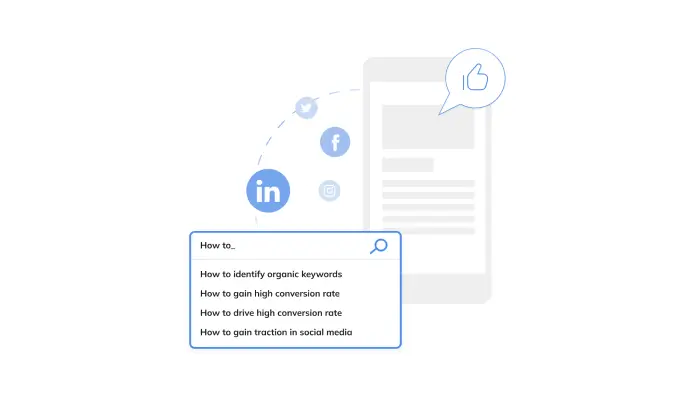It's not news that organic keywords that drive website traffic have become an encrypted mystery, and tracking conversion keywords can be a major hurdle for marketers. Since Google introduced Secure Search in 2011, web analytics tools such as Google Analytics can not display the organic keywords users searched to land on a specific page of your website.
These keywords are grouped together under a "not provided" category—which is basically a keyword without referral data. The same happens when using HubSpot's drill-downs to break Organic Traffic. "Unknown keyword" is what marketers see when using the Sources Reports to analyze where contacts are coming from. So how do you determine which keywords are providing the most value to your users and driving the most traffic? First, you have to look to your SEO research.
SEO in B2B SaaS
For B2B SaaS Companies, SEO is a vital component of their marketing strategies. A combination of Inbound and Account-Based Marketing (ABM) is what we at Kalungi focus our efforts on to drive our Go-To-Market (GTM) Strategies for SaaS companies. On that note, when focusing on demand generation tactics, understanding where conversions are coming from is a key part of the job to be done.
You can use marketing tools like HubSpot, alongside Google Analytics and Google Ads, to track website activity such as session duration, pages per session, bounce rate, paired with information on the source of the session. However, as mentioned in the above section, marketers face a challenge when analyzing the exact keywords that are driving organic traffic to high-performing website pages and conversions.
When building a content calendar, you usually think about the high intent keywords and search queries that your ideal audience would use to find a solution like yours. But how can you optimize and analyze organic outcomes on a granular level if Google is hiding valuable information?
How to optimize and analyze organic outcomes
On the bright side, Google doesn't encrypt data if you are doing PPC campaigns. On your Google Paid Search campaigns, you can still drill down to a keyword level which helps to add color to your content and SEO decisions. However, it's not enough. Something I've found to be very helpful is to use HubSpot's Web Analytics History KPI, "First Page Seen."
HubSpot allows you to track the original source of your contacts and the drill-downs feature provides more insights into the source. For instance, if a contact came through "Paid Search," the "Drill-down 1" will tell you the campaign name the contact came from, and the "Drill-down 2" will tell you the exact paid keyword. You can also find this information in Google Ads, but it's helpful to access it in HubSpot when analyzing your paid Marketing Qualified Leads (MQLs).
For example: in the case of a contact that came from an Organic source, the "Drill-down 1” field will say "Unkown keyword." That's where the Web Analytics History KPI "First Page Seen" plays an important role. If you can track back to the first website page or blog that your organic contact visited, you'll be able to analyze which organic keywords that page is ranking for.
A tool like SEMrush or even HubSpot will tell you which organic keywords the page is organically ranking for, the SERP position, volume, impressions, and clicks. This will give you an idea (and I would dare to say a pretty clear one) of what organic search keywords are driving conversions.
What’s next?
Now, if you use this workaround to analyze organic conversions you must keep in mind the importance of lifecycle stages and entry criteria. It's not the same to analyze the source of subscribers, leads, MQLs, and SQLs. Read more on how to define lifecycle stages for B2B SaaS companies here.
If you don't have a big marketing engine, you need to be smart with your content production and focus on the keywords that drive high-quality conversions or MQLs while also balancing top-of-the-funnel keywords that will drive more visits and exposure to the site. Even though your high-intent keywords probably have low volume, this workaround will help you see if the quality is worth it or not.
